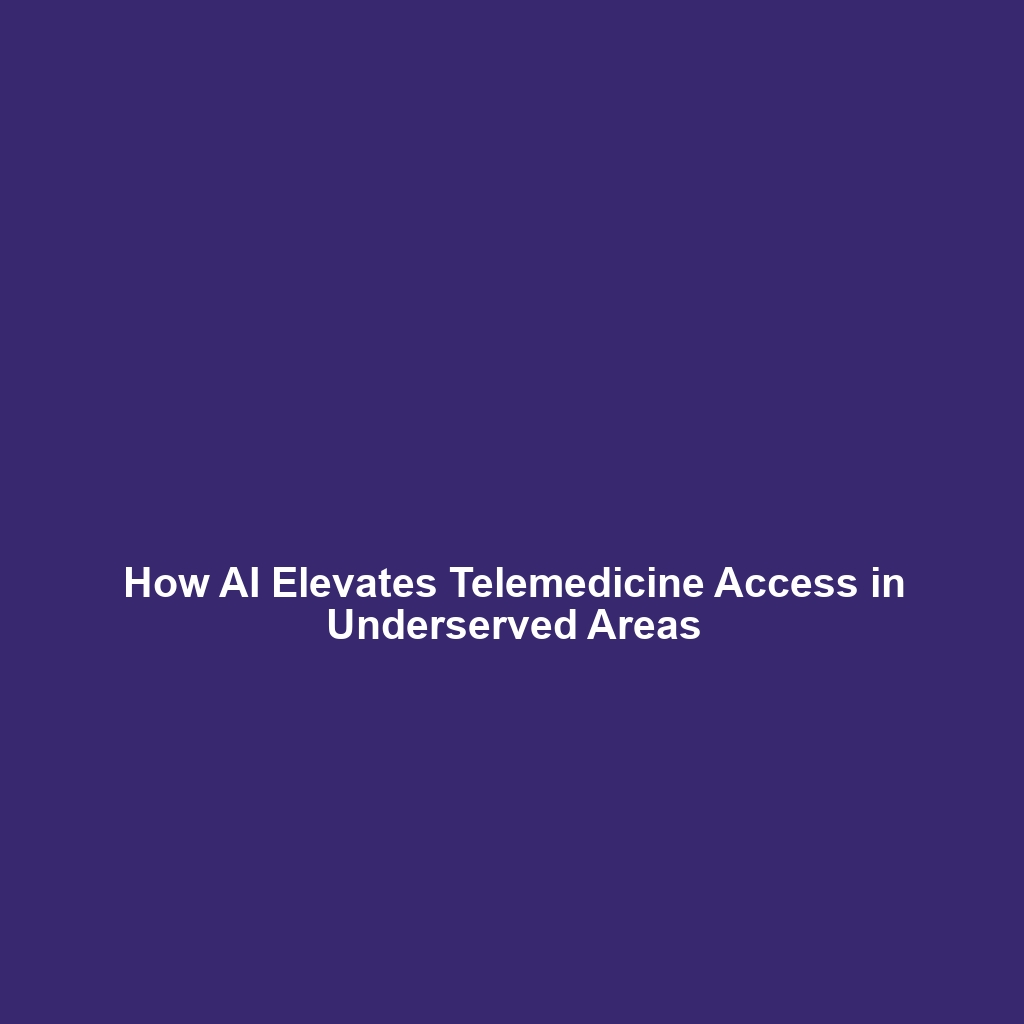How AI is Expanding the Reach of Telemedicine in Underserved Areas
Introduction
Artificial Intelligence (AI) is playing a transformative role in healthcare, particularly in telemedicine, significantly improving accessibility in underserved areas. This integration not only enables wider outreach but also enhances the quality of care provided to populations that often lack sufficient healthcare resources. By deploying AI technologies, telemedicine can bridge the gap between health providers and patients, making it a pivotal development in AI in Healthcare.
Key Concepts
To understand how AI is expanding the reach of telemedicine in underserved areas, it’s crucial to recognize several fundamental concepts:
- AI Algorithms: AI uses algorithms and machine learning to analyze health data, which informs care delivery.
- Remote Monitoring: AI-driven tools enable real-time health monitoring and diagnosis, overcoming geographical barriers.
- Predictive Analytics: AI predicts health trends and needs, allowing proactive healthcare measures in communities with limited access.
This framework illustrates how AI enhances telehealth solutions, promoting equitable healthcare access in remote locations.
Implementation in Healthcare Systems
AI-powered telemedicine integrates with existing healthcare systems, providing seamless interactions between patients and practitioners, thus streamlining operations and enhancing care delivery.
Applications and Real-World Uses
The practical applications of how AI is expanding the reach of telemedicine in underserved areas are numerous and impactful:
- Virtual Consultations: AI assists in triaging patients, ensuring they receive the right care promptly.
- Diagnostic Tools: AI applications help healthcare professionals diagnose diseases remotely by analyzing symptoms and medical history.
- Language Processing: AI translation tools empower communication between healthcare workers and non-native speaking patients.
These applications exemplify how AI is used in telemedicine and reinforce the overall significance of AI in Healthcare.
Current Challenges
Despite the promising advancements, there are notable challenges in the application of AI in telemedicine:
- Data Privacy Concerns: Protecting patient data remains a critical issue, particularly in rural settings.
- Technology Access: Limited access to reliable internet or smartphones can hinder telemedicine efforts.
- Regulatory Barriers: Varying regulations across states and countries can complicate the implementation of telemedicine solutions.
Addressing these issues is essential for the sustained growth and effectiveness of AI technologies in healthcare.
Future Research and Innovations
The future of AI in Healthcare holds exciting possibilities, particularly regarding the expansion of telemedicine:
- AI-Driven Personalized Medicine: Future innovations may include more personalized treatment recommendations facilitated by AI.
- Virtual Reality Therapy: Researchers are exploring VR technologies to enhance patient engagement and treatment effectiveness.
- Blockchain for Security: Utilizing blockchain technology can protect patient data integrity, addressing privacy concerns.
As these breakthroughs emerge, they are likely to reshape the landscape of healthcare delivery in underserved areas.
Conclusion
In conclusion, AI is fundamentally expanding the reach of telemedicine in underserved areas, making significant strides toward equitable healthcare access. By understanding the applications, challenges, and future innovations, we can better appreciate the vital role of AI in addressing healthcare disparities. For more information on related topics, explore our articles on telehealth benefits and future innovations in AI in healthcare.








